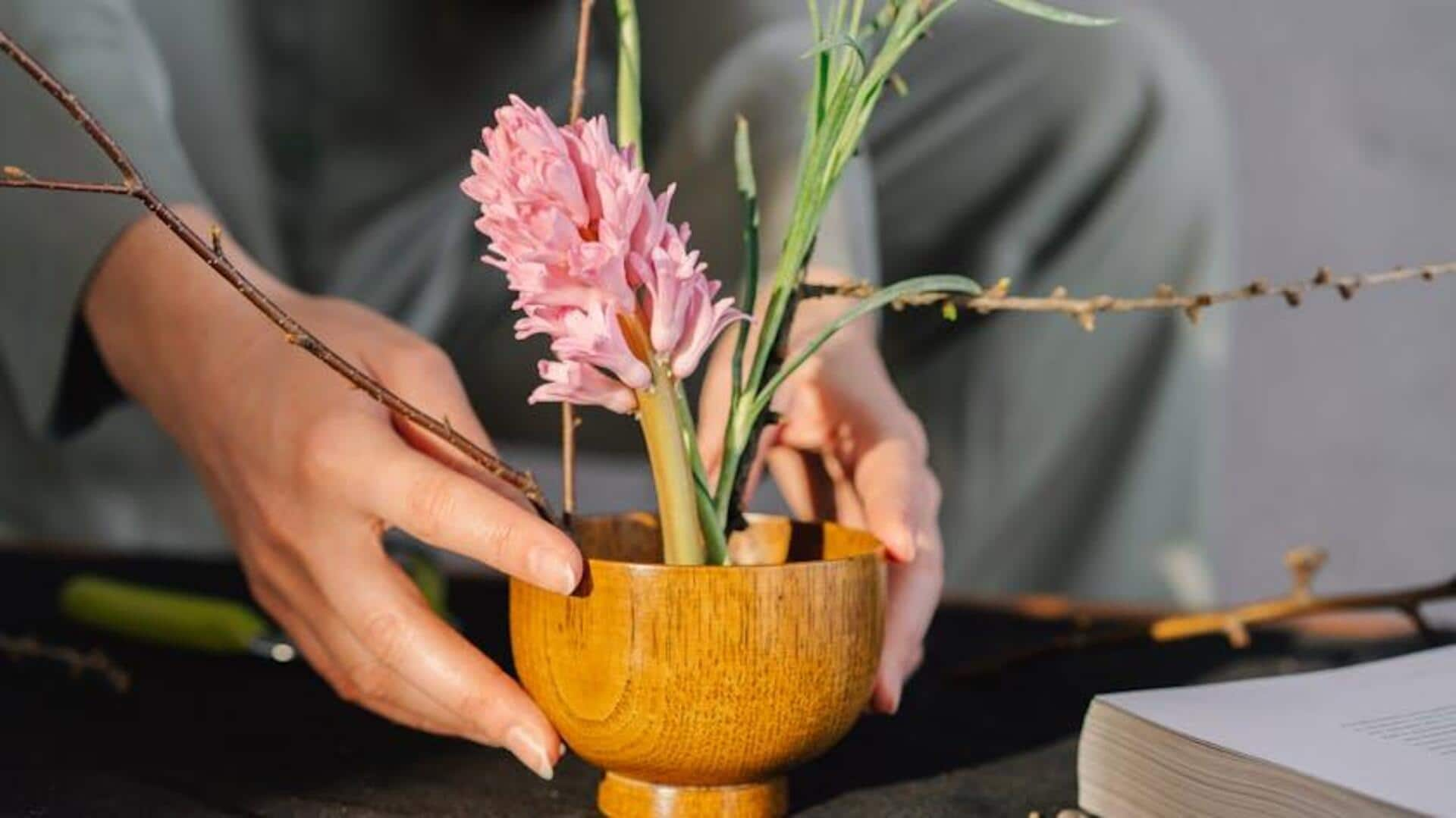
5 captivating aspects of Japanese ikebana
What's the story
Ikebana, the traditional Japanese art of flower arrangement, is much more than just putting flowers into a container. It is a disciplined art form in which nature and humanity are brought together. Unlike Western floral arrangements which emphasize on symmetry and volume, ikebana stresses on harmony, balance and simplicity. This ancient practice has evolved over centuries, continuing to fascinate enthusiasts worldwide with its unique approach to aesthetics and philosophy.
Aspect 1
Emphasis on minimalism
One of the hallmarks of ikebana is its minimalist nature. The arrangements typically use fewer flowers than Western ones, emphasizing the lines of stems and leaves instead. The minimalism gives way to an opportunity for each element to shine, leading to a serene and spacious feel. Negative space is used purposefully, showcasing beauty in simplicity.
Aspect 2
Harmony with nature
Achieving harmony with nature is the first principle of ikebana. The practitioners consciously pick out the materials that are in season, making the arrangements reflect the natural world at that time. This strong bond with nature not only builds an appreciation for its ever-changing cycles but also encourages mindfulness and deeper observation of seasonal changes. With this, one can experience a beautiful amalgamation of art and nature's rhythm.
Aspect 3
Use of unconventional materials
Ikebana often involves the use of unconventional materials alongside traditional flowers such as branches, twigs, or even stones. These elements provide texture and depth to arrangements and challenge our conventional notions of beauty. By using diverse materials, practitioners can express their creativity while maintaining balance within their compositions.
Aspect 4
Asymmetrical balance
In the world of ikebana, asymmetry is not only welcome but also embraced as a core design principle. This makes every element sing in its own voice, steering clear of perfect symmetry and creating a tension of sorts. These arrangements attain an alluring balance, revealing the beauty of imperfection. This principle distinguishes ikebana, reflecting its profound love for nature's asymmetry.
Aspect 5
Spiritual significance
Going beyond aesthetics, ikebana practice has a spiritual significance for many practitioners. It is a meditation where they find peace in arranging flowers mindfully according to some principles rooted deeply within Japanese culture's philosophical traditions like Zen Buddhism or Shinto beliefs.